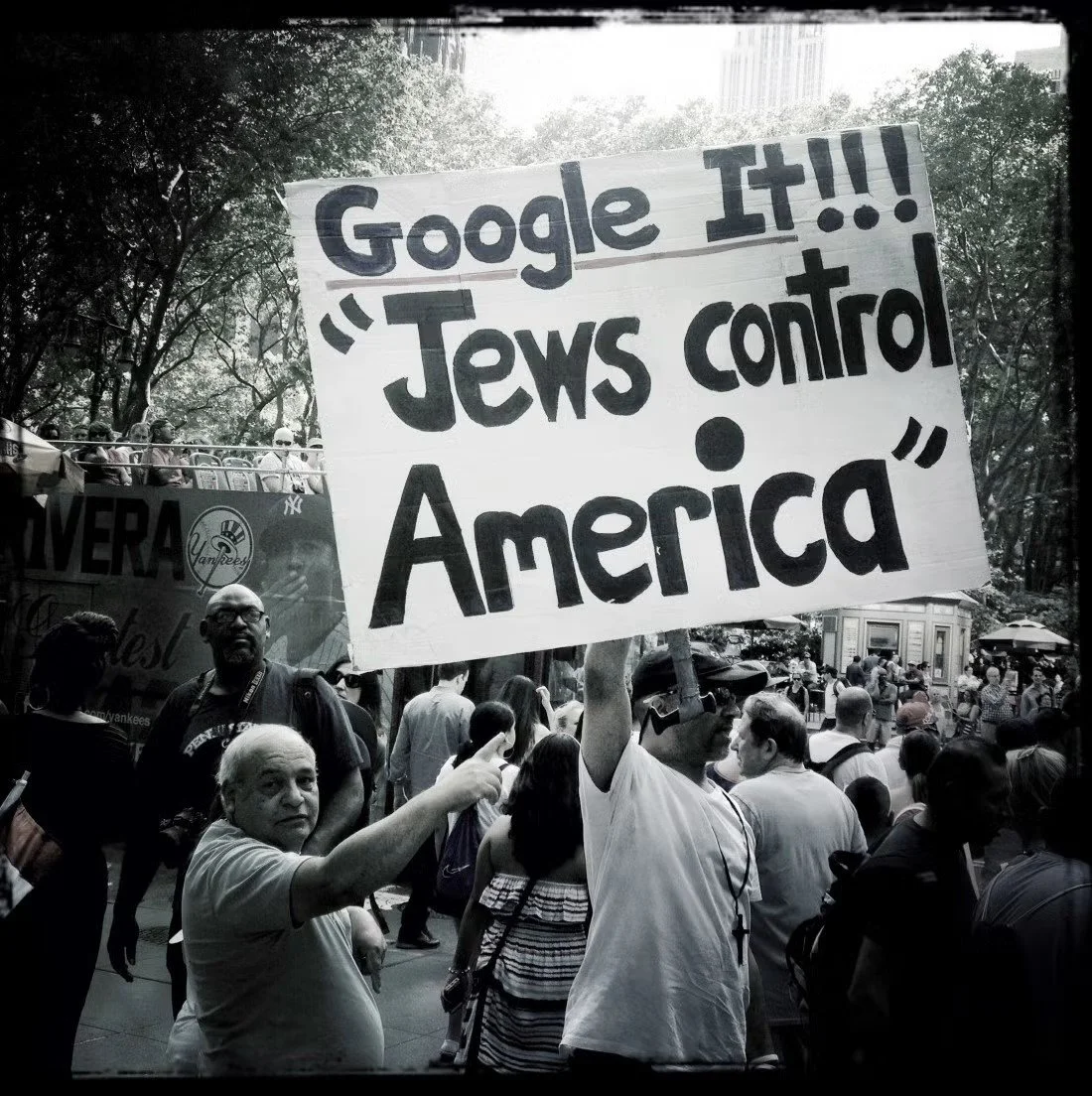
Antisemitism
What is Antisemitism?
Antisemitism refers to prejudice, discrimination or hostility directed at Jewish people. It is generally based on negative stereotypes, myths, or misinformation about Jews, Judaism, or Jewish identity.
(Adopted from the ADL Publication entitled “Understanding Antisemitism and Anti-Zionism” dated October 12, 2022, and updated June 16, 2025)
Antisemitism is a Conspiracy Theory
Antisemitism functions as a conspiracy theory by blaming Jews for the world’s problems. It falsely claims that Jews secretly control governments, economies, or global media. These ideas have no basis in reality, but they persist because they offer simple explanations for complex issues. Antisemitism is irrational, self-reinforcing, and resilient, adapting to both left- and right-wing ideologies.
Forms of Antisemitism
Antisemitism takes many forms, including religious antisemitism, racial antisemitism, economic scapegoating, and political conspiracy theories. It includes stereotypes about Jews being greedy, manipulative, or disloyal. These ideas can lead to social exclusion, violence, or genocide. Today, antisemitism appears in both overt and subtle ways—from hate crimes to coded language in politics.
Religious
-
Hostility toward Jews based on religious differences, often rooted in the belief that Judaism rejects or threatens Christian (or dominant religious) truth.
-
Accusations of deicide (the killing of Jesus) or forced conversions during the Inquisition.
Political
-
Fear or accusation that Jews hold disproportionate political power or are undermining the political status quo, often tied to nationalist or white Christian identity.
-
Conspiracy theories that Jews manipulate governments or movements like communism or globalism.
Social
-
The exclusion of Jews from mainstream social life, communities, or institutions.
-
Jews being banned from joining country clubs, universities, or professional societies, leading them to create parallel institutions.
Cultural
-
Denigration or rejection of Jewish contributions to art, literature, or intellectual life as inferior, corrupting, or dangerous.
-
Nazi labeling of Jewish art and music as "degenerate" in exhibitions meant to mock and reject Jewish cultural expression.
Economic
-
Discrimination that restricts Jewish participation in economic life, often accompanied by myths that Jews dominate finance or exploit others for profit.
-
Jews barred from owning land or joining guilds in medieval Europe, which led some to enter moneylending—later used against them as a stereotype of greed.
Racial
-
The belief that Jews are biologically inferior or inherently different, often used to justify exclusion or violence regardless of belief or behavior.
-
Nazi ideology that framed Jews as a racial threat to Aryan purity, leading to the Nuremberg Laws and eventually genocide.
Ancient Roots of Antisemitism
The roots of antisemitism stretch back to the ancient world.
In ancient Egypt, Greece, and Rome, Jews were often seen as outsiders for refusing to worship local gods or adopt dominant cultural norms.
Early Christian writings depicted Jews as responsible for the death of Jesus, a narrative that fueled centuries of persecution in Christian Europe.
The First Blood Libel: William of Norwich. 15th century. Rood screen. Church of the Holy Trinity, Loddon, England. This panel falsely depicts the crucifixion of 12-year-old William of Norwich, a claim fabricated by an English monk to promote the boy’s sainthood. It is considered the earliest known example of the blood libel–the antisemitic myth that Jews murdered Christian children for ritual purposes. Credit: Neil Holmes – Holmes Garden Photos / Alamy.
1349 Burning of the Jews in Belgium. Circa 1353. llustration from the Tractatus Quartus by French chronicler Gilles de Muisit. As the bubonic plague devastated Europe, townspeople in Belgium blamed Jews for the disease and carried out violent attacks, including public burnings. Credit: Heritage Image Partnership Ltd.
Christian Europe and Anti-Jewish Violence
Throughout the Middle Ages, Jews in Christian Europe were segregated, taxed, and periodically expelled.
They were accused of ritual murder, host desecration, and poisoning wells. These lies incited violent pogroms and massacres.
The Crusades and the Black Death intensified hatred and violence, often with the support of religious and political authorities.
This 1898 German postcard features an antisemitic caricature of a Jewish man surrounded by dogs, using animal imagery and coded language like "Gestellter Hirsch" to promote hateful stereotypes that were widespread in European popular media at the time. From the HMREC Collection.
Modern Antisemitism
In the 19th century, antisemitism took on a new racial and political character.
Jews were falsely depicted as an inferior race or as threats to national identity. Antisemitic political parties and newspapers gained influence in parts of Europe.
These modern forms of antisemitism laid the foundation for Nazi ideology and the Holocaust.
Antisemitism in Nazi Germany
The Nazi regime turned antisemitism into state policy.
Jews were stripped of their rights, dehumanized in propaganda, and ultimately targeted for annihilation.
Nazi ideology portrayed Jews as the root of Germany’s problems and as enemies of the so-called Aryan race.
This ideology led to the murder of six million Jews during the Holocaust.
In Quebec and Ontario, some anti-Jews signboards were installed in the 1930s. (Alex Dworkin, Canadian Jewish Archives)
Antisemitism in the U.S. and Canada
Antisemitism was also present in North America.
In the early 20th century, Jewish immigrants faced quotas, housing restrictions, and exclusion from universities and country clubs.
Antisemitic organizations like the Ku Klux Klan spread conspiracy theories.
Although the Holocaust shifted public opinion, antisemitism has never fully disappeared from American or Canadian life.

Contemporary Antisemitism
Today, antisemitism persists around the world. It includes vandalism of synagogues, physical attacks, online hate, and public figures spreading conspiracies. Antisemitism comes from the far right, far left, and Islamist extremists. Social media has made it easier to spread hateful messages. Many Jews report feeling unsafe or unwelcome in their communities.
Jewish gravestone vandalized with swastikas and antisemitic phrases at a Jewish cemetery in Massachusetts. Credit: Anti-Defamation League/Storyful.
Antisemitism & Anti-Zionism
Criticism of Israel is not inherently antisemitic.
But when criticism denies Israel’s right to exist, demonizes Jews collectively, or uses double standards, it crosses into antisemitism. Some modern forms of antisemitism disguise themselves as anti-Zionism.
It’s important to distinguish between legitimate political critique and hate speech that endangers Jewish people.

Why It Matters
Antisemitism is not just a Jewish issue. It is a warning sign of deeper social breakdown.
Societies that tolerate antisemitism often see rising hatred against other minority groups and growing authoritarianism.
Confronting antisemitism helps protect democracy, human rights, and the dignity of all people.
What You Can Do
Combating antisemitism is a shared responsibility—and a moral imperative.
Fighting antisemitism begins with awareness.
Learn to recognize stereotypes and challenge hateful speech.
Listen to Jewish voices and support Jewish communities.
Speak up when you see injustice, and promote inclusive values in your schools, workplaces, and online spaces.
Made in partnership with the Humanus Network. Last updated July 2025.






